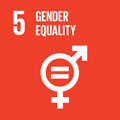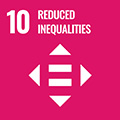- Docente: Daniela Calanca
- Credits: 6
- SSD: M-STO/04
- Language: English
- Teaching Mode: In-person learning (entirely or partially)
- Campus: Rimini
- Corso: Second cycle degree programme (LM) in Fashion Studies (cod. 9067)
Learning outcomes
At the end of the course the student acquires skills and knowledge in the context of socio-historical research concerning the themes that link fashion to cultural heritage in the twentieth century. In particular, he has the ability to apply management theories and methods for the conservation and enhancement of public and private fashion heritage.
Course contents
Fashion and Cultural Heritage: definitions and articulations
Cultural Heritage and Fashion Companies
International Archives, Museums, Galleries of Costume
Methods and analytical approaches
Conservation and enhancement practices
Management of Fashion Cultural HeritageReadings/Bibliography
For attending students:
Teaching Materials will be made available by professor at the beginning of the course.
For non-attending students:
J. Petrov, Fashion, History, Museums: Inventing the display of dress, Bloomsbury 2019F. Sayer, Public History. A practical Guide, Bloomsbury 2015
Teaching methods
Frontal lessons, laboratory, seminars. During the course students will carry on a research on a fashion institution (museum, archive, gallery etc..), in order to learn the methodology of preservation and management of Fashion Cultural Heritage.
During the course a visit to a Fashion Museum and an Archive is expected.Assessment methods
The exam is oral and written
Oral Exam
Attending students: report and presentation of the research with multimedia tools (power point etc..), during classes will be valid as oral exam.
Non-attending students: oral exam on recommended readings.
Written Exam
Mandatory for all students: a research paper (3000 words) about a fashion institution. The wok must be submitted to the teacher within 7 days before the exam dates published on Almaesami.
Teaching tools
Multimedia tools
Office hours
See the website of Daniela Calanca
SDGs



This teaching activity contributes to the achievement of the Sustainable Development Goals of the UN 2030 Agenda.
